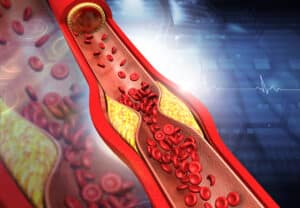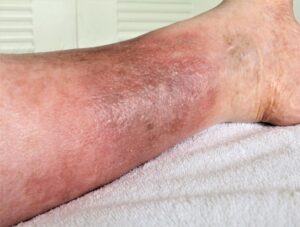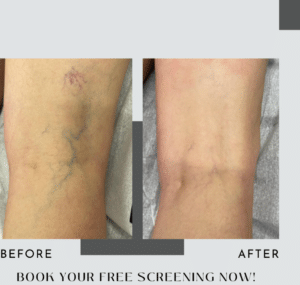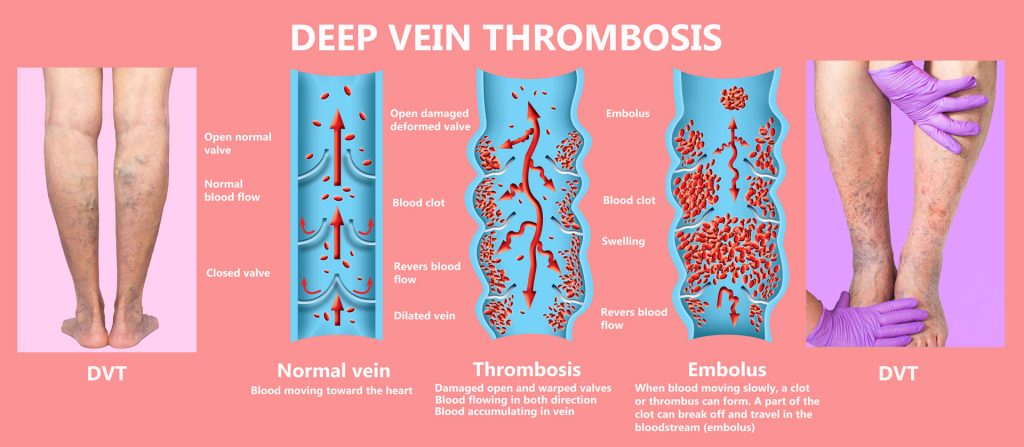What is Thrombosis?
By Salcedo Medical Center and Vein Institute | Posted on May 19, 2024.
Thrombosis occurs when a blood clot blocks veins or arteries.
It is a serious condition that can lead to severe health complications such as heart attacks, strokes, and pulmonary embolism
There are two types of Thrombosis:
- Venous Thrombosis is a condition in which a blood clot (thrombus) forms in a vein, obstructing the normal flow of blood.
Veins main function is to return oxygenated blood from the body back to the heart.
Vein Thrombosis can occur in various parts of the body, but most commonly affects the deep veins in the legs.
Cuando se forma un coágulo en las venas profundas, la condición se conoce como trombosis venosa profunda (TVP).

2. Arterial Thrombosis is the formation of a blood clot (thrombus) within an artery, a blood vessel that carries oxygen-rich blood from the heart to the rest of the body.
Causes of Thrombosis

1. Not being able to move around due to:
-
- Prolonged immobility, such as sitting for long periods during travel.
- Being bedridden after surgery, can lead to slow or stagnant blood flow, increasing the risk of clot formation.
2. Inherited Disorders
-
-
- The tendency for the blood to clot formation, can be due to genetic factors, history of DVT (deep vein thrombosis)
-

3. Medical Conditions
-
-
- Such as cancer or dehydration
-
4. Obesity
5. Autoimmune Disorders
6. Medications
-
- Like oral contraceptives or hormone replacement therapy)
7. Endothelial Injury
- Damage to the inner lining of the blood vessels, caused by surgery, trauma, or chronic conditions like atherosclerosis, can trigger clot formation as part of the body’s natural healing response.
8. Smoking
Deep vein thrombosis (DVT) is a dangerous and potentially fatal disorder. How severe? According to statistics, 10–30% of patients die within a month after their diagnosis.
Prevention
Preventing venous thrombosis involves managing risk factors:
- Stay Active: Regular exercise and avoiding prolonged periods of immobility are key.
- Hydrate: Drink plenty of water, especially during long travels or when recovering from surgery.
- Use Compression Stockings: These may be recommended if you’re at high risk, such as after surgery.
- Monitor Medical Conditions: Properly manage chronic conditions like hypertension, diabetes, and obesity.

Venous thrombosis is a serious condition that requires timely diagnosis and treatment to prevent complications, such as pulmonary embolism. Understanding the risk factors and symptoms is crucial for early detection and effective management. If you suspect you have venous thrombosis or are at risk, seeking medical advice is essential for appropriate care and prevention.



